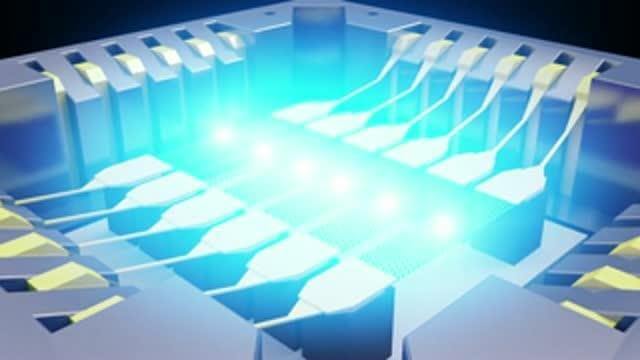A paper titled “High-Fidelity and Ultrafast Initialization of a Hole-Spin Bound to a Te Isoelectronic Centre in ZnSe” was recently published in the prestigious journal Physical Review Letters. The creation of a qubit in zinc selenide, a well-known semi-conductor material, made it possible to produce an interface between quantum physics that governs the behaviour of matter on a nanometre scale and the transfer of information at the speed of light, thereby paving the way to producing quantum communications networks.
Classical physics vs. quantum physics
In today’s computers, classical physics rules. Billions of electrons work together to make up an information bit: 0, electrons are absent and 1, electrons are present. In quantum physics, single electrons are instead preferred since they express an amazing attribute: the electron can take the value of 0, 1 or any superposition of these two states. This is the qubit, the quantum equivalent of the classical bit. Qubits provide stunning possibilities for researchers.
An electron revolves around itself, somewhat like a spinning top. That’s the spin. By applying a magnetic field, this spin points up, down, or simultaneously points both up and down to form a qubit. Better still, instead of using an electron, we can use the absence of an electron; this is what physicists call a “hole.” Like its electron cousin, the hole has a spin from which a qubit can be formed. Qubits are intrinsically fragile quantum creature, they therefore need a special environment.
Zinc selenide, tellurium impurities: a world first
Zinc selenide, or ZnSe, is a crystal in which atoms are precisely organized. It is also a semi-conductor into which it is easy to intentionally introduce tellurium impurities, a close relative of selenium in the periodic table, on which holes are trapped, rather like air bubbles in a glass.
This environment protects the hole’s spin – our qubit – and helps maintaining its quantum information accurately for longer periods; it’s the coherence time, the time that physicists the world over are trying to extend by all possible means. The choice of zinc selenide is purposeful, since it may provide the quietest environment of all semiconductor materials.
Polytechnique Montreal and CNRS of France, a team effort
Philippe St-Jean, a doctoral student on Professor Sébastien Francoeur’s team, uses photons generated by a laser to initialize the hole and record quantum information on it. To read it, he excites the hole again with a laser and then collects the emitted photons. The result is a quantum transfer of information between the stationary qubit, encoded in the spin of the hole held captive in the crystal, and the flying qubit – the photon, which of course travels at the speed of light.
This new technique shows that it is possible to create a qubit faster than with all the methods that have been used until now. Indeed, a mere hundred or so picoseconds, or less than a billionth of a second, are sufficient to go from a flying qubit to a static qubit, and vice-versa.
Although this accomplishment bodes well, there remains a lot of work to do before a quantum network can be used to conduct unconditionally secure banking transactions or build a quantum computer able to perform the most complex calculations. That is the daunting task which Sébastien Francoeur’s research team will continue to tackle.


